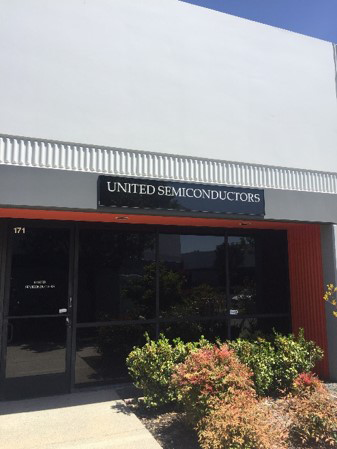AFRL sponsorship recipient wins NASA space manufacturing contract
WRIGHT PATTERSON AIR FORCE BASE, OH. — Air Force Research Laboratory research sponsorship recipient, United Semiconductors, LLC (USLLC), is one of eight companies selected to work on a three-year, $21 million NASA contract to manufacture tools in space.
Almost two decades ago, AFRL’s photonic materials branch began collaborating with Professor Partha Dutta at the Rensselaer Polytechnic Institute and sponsoring his research on the growth of semiconductor crystals. The success of this initial fundamental research project spurred interest for key DOD applications.
Since 2005, AFRL has worked with United Semiconductors, a woman-owned small business in New York to develop a suite of semiconductor and photonic materials for infrared components. The effort started with just two furnaces producing small size crystals for research evaluation. In 2019, after successful demonstration and development, the company moved to southern California and gradually expanded resources to 32 furnaces. AFRL continued to support USLLC through 2020 under contract efforts that supported material development for infrared sensors.
Dr. Peter Schunemann, former president of the American Association of Crystal Growth and chief crystal growth scientist of BAE Systems, said, “Regarding Dr. Partha Dutta, I have known him for many years…he has my utmost respect as a crystal grower. He is certainly one of the most productive researchers ever funded by AFRL. I look forward to seeing the impactful contributions he will make to this ambitious NASA initiative.”
The key technological innovation of this work is to grow large diameter semiconductor crystals with high optical quality, which have use in several U.S. Air Force and U.S. Space Force systems of interest.
Based on the unique properties their material demonstrated, NASA awarded United Semiconductors a contract to develop new technologies using the benefits of microgravity for in-space manufacturing of advanced materials. USLLC will grow semiconductor crystals used in electromagnetic sensors. Under microgravity conditions, the company hopes to produce larger crystals with significantly fewer defects. If successful, the crystals grown in space would produce usable wafers or thin slices of semiconductors used to build circuits.
“The ternary semiconductor crystals that [AFRL] funded him to develop are incredibly challenging,” Schunemann said. “Numerous obstacles had to be overcome to achieve device-quality crystals, including severe segregation, compositional nonuniformity, constitutional supercooling, inclusions, voids, cracks and grain boundaries. The fact that he has been able to achieve reproducible crystals with high optical quality, uniformity and precise composition control, and scale these crystals to very large diameters, is nothing short of astounding!”
AFRL has a history of working with fundamental researchers in universities and with small businesses successfully translating key technologies from research scale to system level products.
Raytheon, with help of AFRL, has funded USLLC to grow crystals required to build critical sensor systems. In-space manufacturing and other microgravity advancements can potentially reduce the cost and schedule required to build sensors. According to a Raytheon scientist, Raytheon looks forward to the outcome of this NASA-sponsored program.
NASA hopes to use this collaboration with USLLC and others to demonstrate the benefits of in-space manufacturing and other microgravity advancements that are impossible to make on Earth to make strides toward commercial economy in low-Earth orbit.
As USLLC’s contract with NASA progresses, AFRL’s photonic materials branch branch continues to fund crystal growth effort for Air Force application from fiscal years 2021 through 2023. To read more about the contract, visit https://www.nasa.gov/mission_pages/station/research/news/nasa-selects-phase-1-proposals-for-inspa.
About AFRL
The Air Force Research Laboratory (AFRL) is the primary scientific research and development center for the Department of the Air Force. AFRL plays an integral role in leading the discovery, development, and integration of affordable warfighting technologies for our air, space, and cyberspace force. With a workforce of more than 11,500 across nine technology areas and 40 other operations across the globe, AFRL provides a diverse portfolio of science and technology ranging from fundamental to advanced research and technology development. For more information, visit: www.afresearchlab.com.

United Semiconductors, LLC facility in Los Alamitos, California (Courtesy photo)

United Semiconductors, LLC facility in Los Alamitos, California. (Courtesy photo)

Photo on the Left: A pristine 50 mm diameter ternary III-V semiconductor wafer produced at a United Semiconductors facility in Los Alamitos, California.(Courtesy photo) Photo on the Right: A pristine, distortion-free 50 mm diameter ternary III-V semiconductor wafer produced at a United Semiconductors facility in Los Alamitos, California. The pen placed underneath displays the wafer’s distortion-free clarity. (Courtesy photo)
